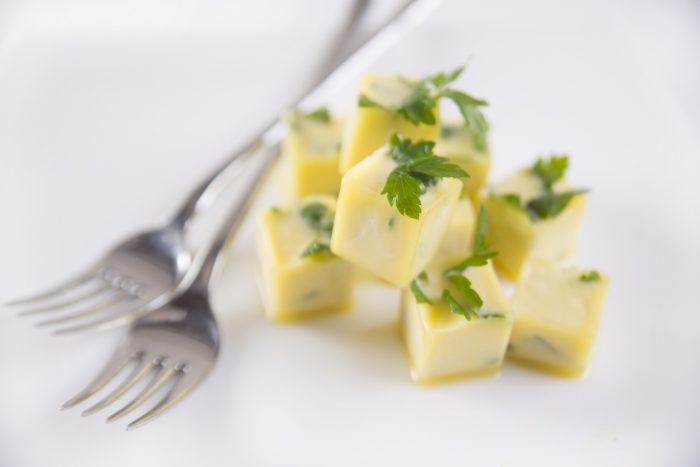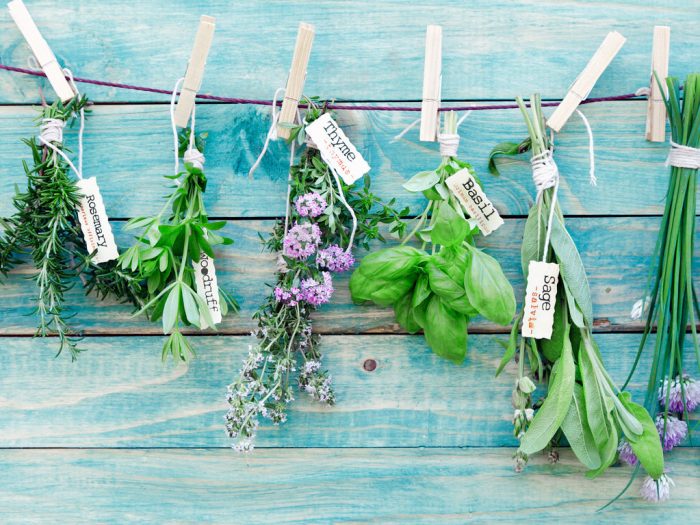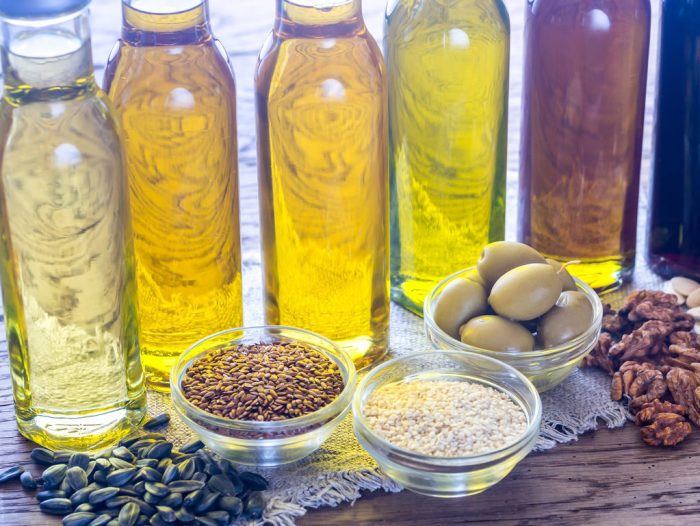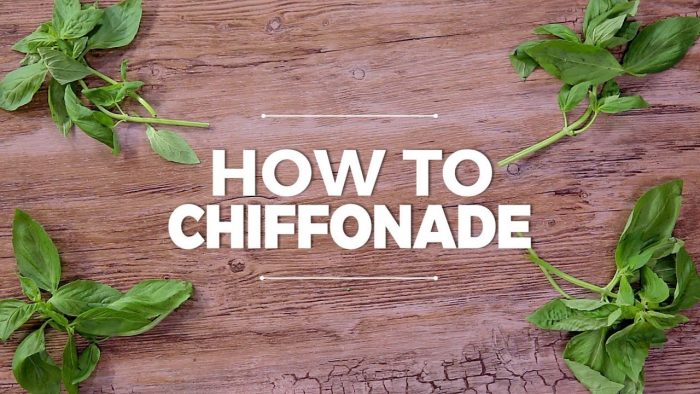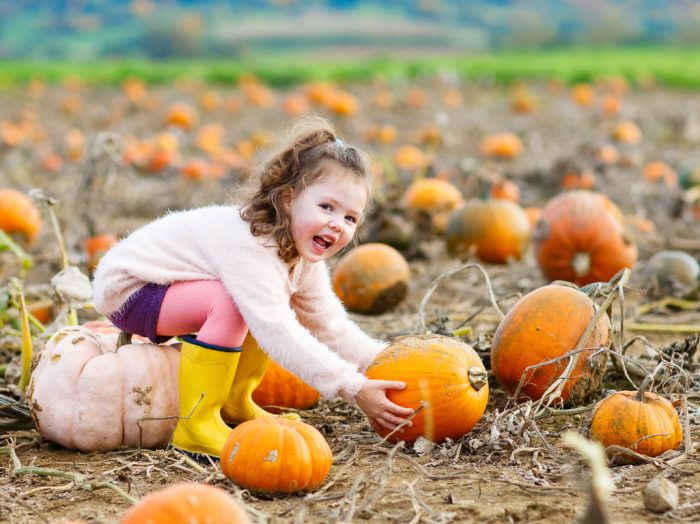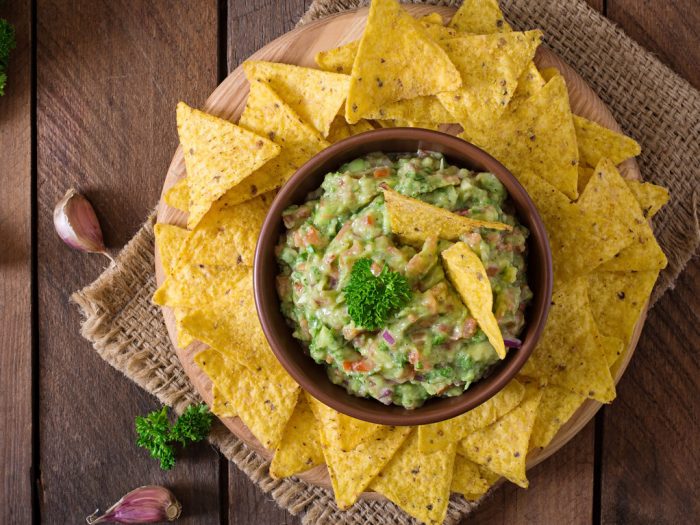If your cooking expertise is limited to chopping some veggies for a salad or throwing some frozen fries in the skillet, then some herbs could go a long way in helping you diversify. They are a very low-calorie way of bringing out the flavor in your food, and they have a lot of health benefits! If you don’t know where to start, we’ve got you covered. The class is in session: Cooking with herbs 101!
Seasoning. Herbs and Spices. For me, it’s a miraculous step of cooking, one I overlooked for a long time, without knowing what I was missing on. Now, I can’t live without some nicely flavored herby goodness added to most of my food. Be it basil, thyme, mint, oregano, or sage. It all changed when I ate a salad with some marjoram sprinkled in, and my taste buds were awake to new sensations. I knew I had to try all of them. But when it came to cooking with herbs, I was a newbie. The best way to learn this is… experimentation. We give you some pointers.
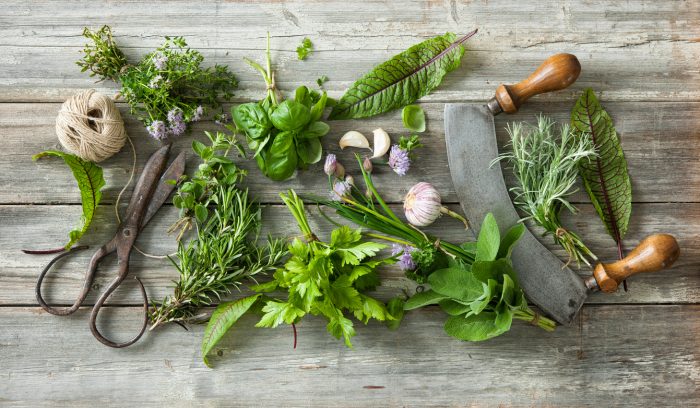
Fresh or dry herbs?
First of all, let’s define herbs: they’re the leaves and greener parts of the plant. In opposition to that, spices are usually the seeds, bark, and roots of a plant.
Herbs are available in two ways: dried or fresh. And they can be used both ways on most occasions. But what’s the recommended use?
Use fresh herbs for garnishes, roasts, and sautéing. They have amazing aromatic qualities, and they’re great when chopped and mixed into foods like purees, mashed potatoes even.
Use dried herbs when you’re cooking with oils or butter because they infuse the cooking liquid with their flavor! Pinch them a little between your fingers before sprinkling them, to get them to release their flavor. You can also crush them in a mortar and pestle or use them in dry rubs.
Usually, you need to use a larger quantity of dried herbs than fresh ones. Because fresh ones have the strongest flavor. Herbs like basil, oregano, and sage tend to lose some of their flavors when they’re dried. Thyme and rosemary hold up their flavor better. That’s why you should always keep tasting when you’re cooking, so you get a grip on how different herbs behave when heated.
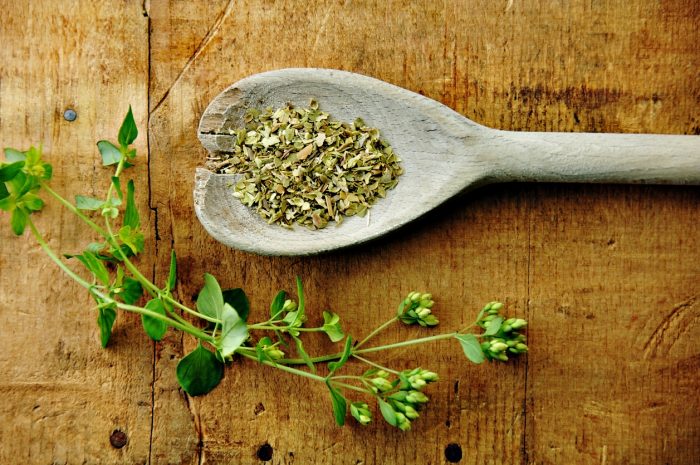
5 tips for cooking with herbs
1. Timing is important
It’s best to add dried herbs while your dish is cooking, while fresh herbs bode better when added at the end. You won’t always have a batch of fresh herbs on hand, so remember that you’ll use 50 percent more dried herbs than you would otherwise use fresh.
2. Chiffonade is useful
Mastering this technique helps you manage better fresh herbs like basil leaves. Chiffonade is easier than you might expect. And we have already covered this technique here. Link
3. Learn how to strip your herbs
There are two main types of herbs: those with woody stems and those with soft stems. Removing the leaves is different in both cases.
Hard herbs, the ones with woody stems, are rosemary, lavender, lemongrass, and sage. These herbs are usually too strongly flavored or too tough to be used raw and are infused in dishes through cooking. Stripping them can be a pleasure. Use a firm hand and zip your fingers along the stem in the opposite direction from the one leaves grow in.
Basil, parsley, chervil, and chives are soft herbs and have soft stems. If you want to strip them, pinch off the leaves close to the base. You don’t even have to toss the stems. They’re great for bringing more flavor to dishes like soups or broths.
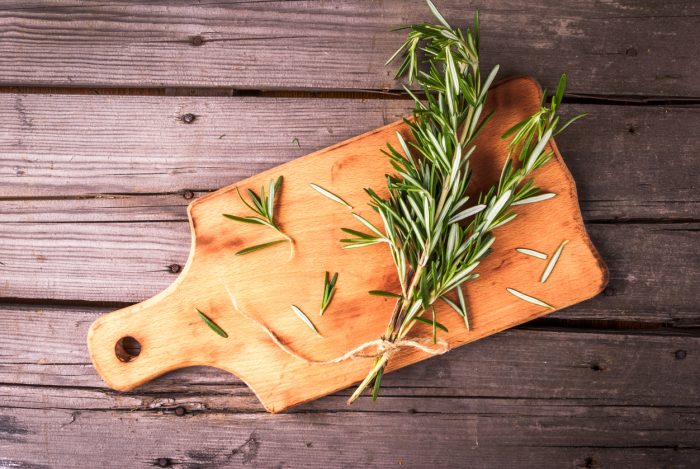
4. Pay attention to instructions
Did you know that there is a difference between “minced parsley” and “parsley, minced” in the recipes you read? The first one means that you should mince the parsley, and then measure it. The second version means that first, you measure the parsley, and then you mince it. But don’t fret about it too much. Usually, the herb amount is pretty similar in both cases. And you are definitely going to taste the dish and see if it needs something extra, right?
5. Olive oil and herbs are friends
Cooking with herbs goes hand in hand with preserving the herbs. If you want to preserve fresh herbs, don’t freeze them in water, but in olive oil. That way, you can drop the olive oil and herbs cube directly in the pot when cooking. Just make sure you have a good labeling system and know which herb is which.
